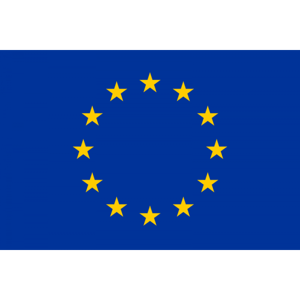A beginner’s guide to the world of remote identification
AML, KYC, IDV… These are not fashion brands, nor rare diseases, but the most common finance acronyms used in the world of remote identification. It can be difficult to remember what is what and who is who, so we created a short-but-sweet guide to help you navigate the industry with greater confidence.
Language in the land of illegal finance activity
Illegal financial activity is precisely what ZealiD helps prevent. Here’s a review on the language you’ll hear and what it means across the finance industry.
1. AML and CFT
Anti-money laundering is referred to as AML. Each country forms its own legal regulations with regards to money laundering. A sibling to AML is CFT, which stands for Combating the Financing of Terrorism. CFT involves the investigation, analysation, deterration and ultimately, the prevention of the funding of activities related to terrorism.
An essential component of both AML and CFT are the unlawful people involved in these activities — whether they assist with the transactions, payments, loans, deposits and everything in between. There will always be people involved with AML and CFT, so unveiling and identifying these individuals is at the very core of combating both activities. These identified individuals are called beneficial owners.
CFT is often prevented by carefully cross-referencing Sanction Lists, which are VERY thorough records created by the international bodies (UN, EU) and countries — they name and list persons who are subjects of sanctions (disobeying the law). Alternatively, a prevention tactic for AML is the ability to spot high-risk individuals who are in charge of, and controlling a prominent public function — more apt to be bribed by unlawful folks looking to host money laundering activity. These people are called politically exposed persons — queue another acronym — PEPs.
Let’s get intimate! Language for remote relationships
ZealiD cultivates relationships as a service provider. Whether it’s how you work, shop, or communicate, we are all adapting to digital lifestyles. Not only can you work from home, but you can bank from home. Finance service providers (like ZealiD) are adapting to digitalisation, and establishing the trust and reliability needed to build and sustain these remote relationships.
2. Due Diligence and KYC
Confirming your identity prior to building a remote relationship is only possible through customer due diligence — CDD. Given the nature of financial activity, supervisors in the financial world find remote relationships a bit riskier to regulate (hence a greater exposure to activity in AML and CFT). That being said, confirming your identity in remote relationships often requires enhanced due diligence (EDD).
CDD and EDD are paramount duties of financial service providers, resting in parallel to a process called know-your-customer, otherwise referred to as KYC. Each precautionary process remains true to the standard that all service providers abide by — the confirmation, validation and security of any digital identity. A fundamental step in confirming remote relationships is identity proofing, known as identity validation or identity verification (IDV).
EU member states define how they wish to verify an identity (IDV), for the purpose of proper EDD. Specific IDV measures are either regulated by AML-specific legislation, or issued specifically by financial supervisory authority on an EU member state-by-state basis.
Still with us?
Language for harmonising Europe
ZealiD is sculpting the path for financial security in Europe. In typical EU harmonisation fashion, AML regulation is indirectly affected by developments in other legal regulatory areas.
3. eIDAS
One development which has caused disruption, is the fusion of AML and eIDAS - Electronic Identification, Authentication and Trust Services. This an EU regulation which lays out a set of standards for electronic identification and trust services for electronic transactions in the European Single Market.
There are two main tracks of eIDAS. The first track includes electronic signatures and trust service providers (TSPs), the second comprises electronic identities (eIDs). Where TSP is anchored in national adoption and legislation bodies, eIDs are affixed to common criteria bodies (CAB) which assess trust services for large, national regulators (such as the Swedish Post and Telecoms Authority).
eIDAS are a challenge among EU member states because there is a general lack of penetration among EU citizens of both eIDs (e.g. smartphone apps) and readily available e-signature electronic devices. There is a deficit of approved tools which provide electronic identification and signature services that abide by the eIDAS rule set allotted by ETSI standards (European Telecommunications Standards Institute). Less than 4% of the EU population have access to an eIDAS electronic signature on their smartphone given restrictions in Southern Europe. This is a major problem, but a great opportunity.
Given the nature of regulations in member states, eIDAS e-signatures can be found in all member states by way of AML legislation and as a means of compliant IDV. The higher e-signatures constitute per definition, with fewer exceptions, compliant IDV. In this lies a tremendous opportunity for financial service providers to leap into the future by providing remote identity verification technology which is trustworthy, user-friendly and convenient... Enter ZealiD!
Get in touch



